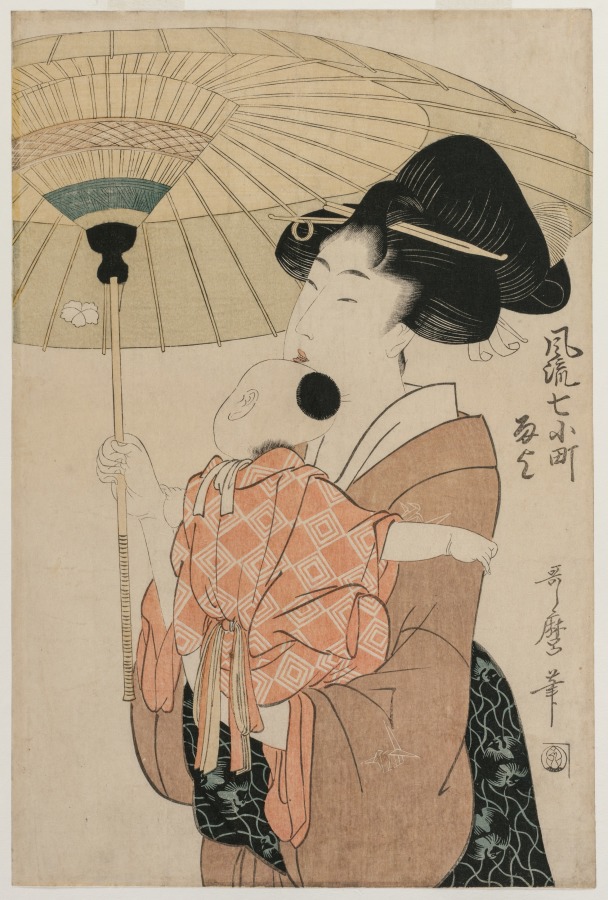| schema:description 11 | "culture: Japan, Edo Period (1615-1868)" |
| schema:description | "collection: Japanese Art" |
| schema:description | "tombstone: Prayers for Rain, from the series Seven Elegant Komachi, late 1790s. Kitagawa Utamaro (Japanese, 1753?-1806). Woodblock print; ink and color on paper; sheet: 38.2 x 25.2 cm (15 1/16 x 9 15/16 in.). The Cleveland Museum of Art, Bequest of James Parmelee 1940.1030...(more)" |
| schema:description | "technique: Woodblock print; ink and color on paper" |
| schema:description | "type: Print" |
| schema:description | "inscription: Signature: Utamaro hitsu
Publisher: Tsuruya Kinsuke (emblem)" |
| schema:description | "creditline: Bequest of James Parmelee" |
| schema:description | "id: 118832" |
| schema:description | "digital_description: Seven plays based on legends from the life of 9th-century poet Ono no Komachi served as the source for this print series. In the play, Komachi shelters from the rain under an umbrella held by her servant. In this print, an elegantly coiffed mother and child replace the poet and her servant....(more)" |
| schema:description | "measurements: Sheet: 38.2 x 25.2 cm (15 1/16 x 9 15/16 in.)" |
| schema:description | "wall_description: Seven plays based on legends from the life of 9th-century poet Ono no Komachi served as the source for this print series. In the play <em>Prayers for Rain</em>, Komachi composes the following poem: <br><br>"It is only reasonable since this is the Land of the Rising Sun for the sun to shine, <br>Nevertheless it is also called ama-ga-shita." <br><br><em>Ama</em> (or <em>ame</em>) can mean both heaven and rain, and <em>shita</em> means under. Therefore, Japan is a land both “under heaven”—and at times— “rainy.” Her witty poem serves as an effective prayer, and ends a drought. She shelters from the ensuing rain under an umbrella held by her servant. In this print, an elegantly coiffed mother and child replace the poet and her servant....(more)" |

